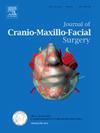Does orthognathic surgery affect sleep quality? Evaluation of the effects of orthognathic surgery on subjective and objective OSA parameters in skeletal class III patients
IF 2.1
2区 医学
Q2 DENTISTRY, ORAL SURGERY & MEDICINE
引用次数: 0
Abstract
This study aimed to assess the impact of orthognathic surgery on both subjective and objective obstructive sleep apnea (OSA) parameters and sleep quality in patients with skeletal class III. An upper airway evaluation was conducted using cone-beam computed tomography. Sleep quality was evaluated subjectively and objectively using the screening OSA questionnaires, the Functional Outcomes of Sleep Questionnaire, and sleep study testing. Data were collected from 23 patients at three time points: within 1 month before surgery (T0), within 1 month after surgery (T1), and 6 months after surgery (T2). Overall, there was a significant decrease in airway volume and minimal cross-sectional area at T1 and T2. Although there was partial recovery of these parameters at T2, they were not fully restored. No changes in subjective parameters were observed. Objective parameters showed significant increases in total apnea-hypopnea index (AHI) and obstructive AHI (ObsAHI) at T1. However, by T2, these values had decreased and were not significantly different from T0. Multivariable linear regression analysis found no associated variables for the change in ObsAHI. These findings suggest that while orthognathic surgery may initially impact upper airway morphology and objective sleep quality, some recovery and adaptation occur over time, though not to pre-surgery levels.
正颌手术会影响睡眠质量吗?评估正颌手术对骨骼III类患者主客观OSA参数的影响。
本研究旨在评估正颌手术对骨骼III类患者主客观阻塞性睡眠呼吸暂停(OSA)参数和睡眠质量的影响。使用锥束计算机断层扫描进行上呼吸道评估。采用筛选性OSA问卷、睡眠功能结局问卷和睡眠研究测试对睡眠质量进行主客观评价。23例患者分别在术前1个月内(T0)、术后1个月内(T1)、术后6个月(T2)三个时间点采集数据。总的来说,在T1和T2时,气道体积和横截面积显著减少。虽然这些参数在T2时有部分恢复,但并没有完全恢复。主观参数未见变化。客观参数显示T1时总呼吸暂停低通气指数(AHI)和阻塞性AHI (ObsAHI)显著升高。然而,到T2时,这些值有所下降,与T0无显著差异。多变量线性回归分析未发现与ObsAHI变化相关的变量。这些发现表明,虽然正颌手术最初可能会影响上呼吸道形态和客观睡眠质量,但随着时间的推移,一些恢复和适应会发生,尽管不会达到手术前的水平。
本文章由计算机程序翻译,如有差异,请以英文原文为准。
求助全文
约1分钟内获得全文
求助全文
来源期刊
CiteScore
5.20
自引率
22.60%
发文量
117
审稿时长
70 days
期刊介绍:
The Journal of Cranio-Maxillofacial Surgery publishes articles covering all aspects of surgery of the head, face and jaw. Specific topics covered recently have included:
• Distraction osteogenesis
• Synthetic bone substitutes
• Fibroblast growth factors
• Fetal wound healing
• Skull base surgery
• Computer-assisted surgery
• Vascularized bone grafts

 求助内容:
求助内容: 应助结果提醒方式:
应助结果提醒方式:


